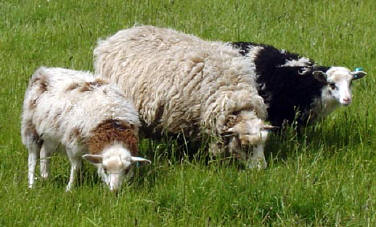|
The Shetland Pony Stud-Book Society
Australia Austria Belgium Denmark Finland France
Germany Netherlands Norway Poland Sweden Switzerland Daughter Stud-Book Societies around the World (You may have to click on the browser bar to allow pop-ups to view these countries) In 1890, the Shetland Pony Stud-Book Society was formed. Since then, the breed has become one of the most popular everywhere. The Society has many Daughter Stud-book Societies around the world. The breed standard is much the same today as it was when the Stud-Book Society was founded. Before 1891, Shetland ponies could exceed the 42" height limit of today, but the limit of 42 inches, or 107 cms. was introduced so the breed would not have to compete with Welsh ponies in the market for ponies to work in the coalmines. There is no minimum height limit. Miniatures, 34 inches or under, are bred from the same stock as the larger ones. Indeed, 2 large Shetlands can produce a miniature while 2 miniatures may produce a standard sized pony. In 1891, the first stud-book was produced. A total of 408 mares and 48 stallions were registered. Numbers rose until the 1st World War, after which some breeders stopped registering foals. Following the Depression in the late 1920's and World War 2, Shetland registrations fell dramatically. Herds of 500 or more Shetlands ran on Scottish moors where they were cheap to keep and youngsters were sold to coalmine owners, the only outlet for surplus stock. By the 1950's, most Shetlands were black in colour - the colour required for the pits. Not until the early 1960's did other colours start to recover as the Shetland began to regain its popularity. The table below shows how two World Wars and the Depression affected registrations of Shetland ponies, and how popular the breed has become. It should be remembered that in the introductory stud-book of 1890, many older ponies were registered. The numbers given for 1941 and 1942, is the total registered over 2 years.
The Shetland pony has enjoyed increasing popularity in more recent times. Many more are in demand for riding and driving. The breed is recognised as much for its calm temperament & suitability as a small child's mount as it is for its ability to take part in fun things such as the Shetland Pony Grand National. There is now an International Shetland Pony Committee that holds meetings in different countries to ensure that the Shetland pony breed continues according to the Mother Stud-Book Society's aims. The Shetland Pony Stud-Book Society keeps the pedigrees of all registered Shetlands in the U.K. The stud-book has been closed since 1971 so no unregistered ponies can now be entered. Registered ponies are issued with a Society passport as foals, this being proof of registration.
For more information on the breed, visit the Shetland Pony Stud-Book Society. For centuries, Shetland has had its own indigenous breeds of livestock. Shetland sheepdogs are known around the world, but there are also Shetland cattle, Shetland poultry, including ducks, and Shetland sheep.
My thanks to the Shetland Museum for allowing me to show their lovely old black & white photographs on the preceding pages.
|



